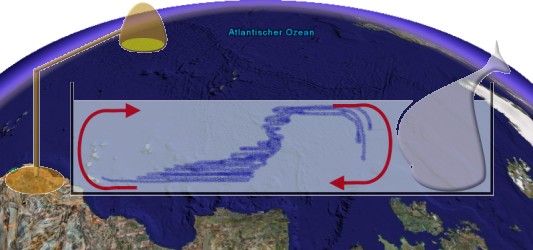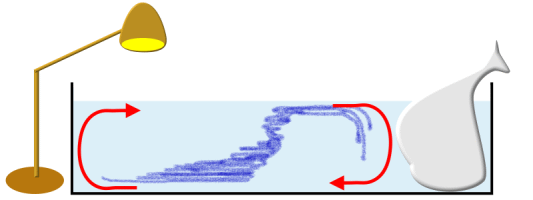|
|
 |
|
|
|
 |
 |
|
|
 |
Ocean streams
We can to some extent simulate the ocean turnover in the North Atlantic using a water filled transparent dish (here a lasagne dish was used), a lamp, a plastic bag with ice and some ink in order to colour the water.
|
 |
 |
|
By means of a warming lamp (standard bulb light or spot light which emits heat energy) we can simulate the Sun over the left hand side of the vessel. Here are the tropical latitudes and the surface water of the ocean warms up. On the right side of the vessel we simulate the arctic region with its icy water. For this purpose we hang a plastic bag with ice into the water.
|
 |
 |
|
After switching on the light and hanging the ice into the water, a circulation slowly establishes. In order to make it visible we can put a drop of ink into the water.
|
Material
Required are:
1 glass dish with water (here lasagne dish)
1 lamp, emitting heat energy
1 plastic bag with ice
ink for colouring the water
|
 |
|
|
|
 |
After a short time, the ink will move with the circulation. At the surface the water moves from the warmer side (tropics) towards the ice bag (Northern polar sea). Here, the water sinks. In the bottom layer the movement goes in the opposite direction. The deep water formed near the ice flows back to the tropics. The animation below shows the process in a photo series. Pictures were taken every 30 seconds.
|
Please click on the animation in order to enlarge it.
The water vessel has been photographed from the side, in the same view as the sketch for the experimental setup. After 3 minutes another drop of ink has been added.
|
 |
|
|
 |
|







